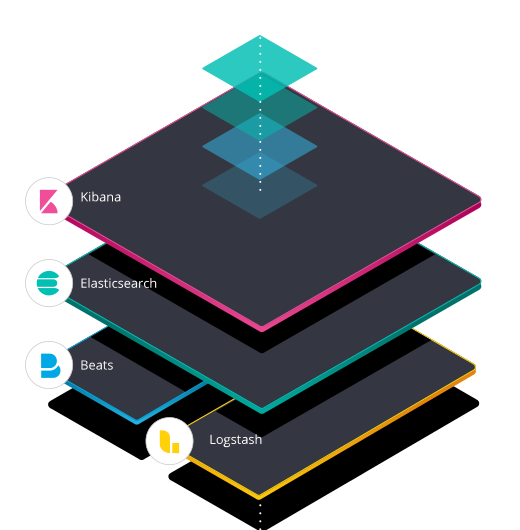前两天在极客时间买了Elasticsearch核心技术与实战的视频课程,希望加深对Elastic Stack的了解,提升自己的能力。实际的工作中也用到了 ELK进行生产环境的日志查询与分析,只是简单的使用,了解一些基本的原理,但是更高阶的内容并不了解。学习一个东西最后的方法就是去实践,同时做一些记录进行输出。

Elastic Stack概念
首先需要了解一下,什么是ELK,为什么是Elastic Stack,What is the ELK Stack? Why, it’s the Elastic Stack.
So, what is the ELK Stack? “ELK” is the acronym for three open source projects: Elasticsearch, Logstash, and Kibana. Elasticsearch is a search and analytics engine. Logstash is a server‑side data processing pipeline that ingests data from multiple sources simultaneously, transforms it, and then sends it to a “stash” like Elasticsearch. Kibana lets users visualize data with charts and graphs in Elasticsearch.
The Elastic Stack is the next evolution of the ELK Stack.
安装环境
因为是为了方便学习,所以使用docker进行环境的搭建,使用docker-compose 进行搭建,Elastic官方也提供了对应的脚本,极客时间上的是基于7.1版本ES的,不过区别不是很大(增加了cerebro监控和kibana,可以自行添加)。
运行 docker-compose 命令
docker-compose.yml 文件内容如下
1 | version: '2.2' |
启动、停止、销毁
1 | 启动 |
检查集群状态
1 | curl http://127.0.0.1:9200/_cat/health |
Elasticsearch Docker 配置修改
Elasticsearch 从/usr/share/elasticsearch/config/ 加载配置,这些配置包括 配置Elasticsearch和设置JVM选项。
更多的配置可以自行查看Elastic的官网,有更详细的介绍,上面的工作就可以完成最基本的配置了